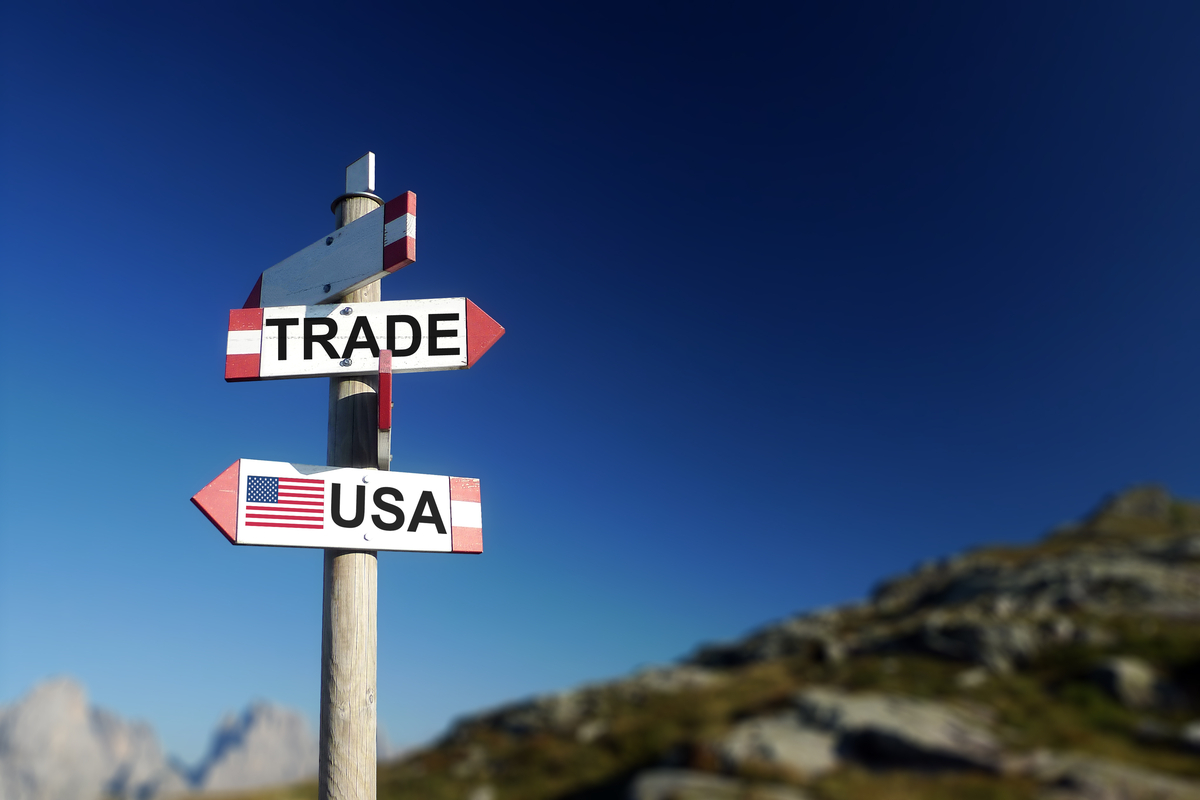For years now, competent commentators have tried to explain that tariffs do no one any good (on net). They are taxes. They increase business costs. They force businesses to cough up to the government for no particular reason. They don’t work to open economies. They sow seeds of distrust. They invite retaliation thus ruining export markets in addition to raising prices and tipping small businesses into the failing side of thin margins.
Time was when protectionist policies benefited powerful industrial interests by insulting them from competition. But with more than 60% of world GDP now bound up with imports and exports, those times are over. Tariffs have never really worked on the whole; now they are literally outmoded.
Not a single incident of mercantilist policies in history refutes those points.
Now we are living through a real-time experiment that is testing these propositions once again. Daily, reports appear that reveal that we are once again discovering what we already knew: to be a “tariff man” is to be a person who lives in denial of reality.
Let us review here the authoritative evidence.
The New York Fed just conducted a business survey and found the following.
When asked how much, if at all, recent increases in tariffs have raised input costs—either directly or indirectly—79 percent of manufacturers and 60 percent of service firms said at least slightly, with 14 percent and 12 percent, respectively, characterizing the increase as substantial. The data illustrate a considerably more widespread effect of higher input costs among service firms than in last year’s survey. Businesses were also asked how they saw changes in trade policy affecting the prices they pay, their selling prices, and other measures in 2019 and in 2020. For both years, roughly two-thirds of manufacturers saw an upward effect on prices paid, and roughly 45 percent saw an upward effect on selling prices. Among service-sector respondents, the numbers were somewhat lower but up noticeably from last August’s survey: for the current year, 60 percent saw an upward effect on prices paid (up from 49 percent in the 2018 survey), and 39 percent reported an upward effect on their selling prices (up from 32 percent last year).
Here is a Tweet storm by importer Josh Jordon that provides some flavor to what business is dealing with here.
Since my business is now caught up in the trade war, I want to go over how crippling it is not just from the tariffs alone, but the uncertainty that Trump’s constant back and forth are causing for a lot of small businesses like myself.
Over the last few years we’ve had products made in the US and in China. The products we make in China would cost anywhere from 2-4x what the cost to make in China.
What that means is if we made them in the US, we would have almost no sales. You can only increase prices so much.
In making these products in China, we have to put or orders in about 45 days before they ship. This is normally not a problem, but when Trump unilaterally slaps tariffs on items with little notice it becomes one.
This has happened with two of our orders this month alone.
We placed two orders that will be “on the water” before Sept 1, but Trump is giving no exemption for those containers.
In other words, we placed the order well before Trump’s new tariff announcement, they will leave China before 9/1, but we’re still going to pay 10% tariffs.
These are low margin products that sell well during the holidays which now have a 10% tariff tax attached to them.
That forces us to either increase the costs to consumers or to eat the tariffs. We’re looking at that now, but will likely increase slightly and eat some of them.
The uncertainty makes this so difficult, and there are so many small businesses like mine doing the same thing (I know because I talk to them), and so many are trying now to get orders in for the holidays.
While Trump delayed *some* of these new tariffs, he left most in place.
By Trump delaying some of the new tariffs until 12/15, he arbitrarily chose winners and losers.
In other words – Trump went through a list of products and decided which categories (companies) he did not want to harm for holiday sales, and which he didn’t care about either way.
So now we have two containers that are coming in that will have a 10% tariff bill attached to them that we will have to pay 100% of — China will not pay one cent of the tariffs as I’ve screamed about for months.
And now we’re looking at the next orders and wondering what to do.
Every order placed now will have a 10% tariff attached to it, with Trump threatening to raise it to 25% if China doesn’t back off.
And while the 10% tariff will be very painful to our small business, a 25% tariff would be crippling.
So many businesses are going through this.
I hope this illustrates how chaotic Trump’s trade policies are for US businesses, and why Trump’s impulsive tariff decisions are devastating.
We all fear that Trump will add/increase the tariffs while orders are en route to us, and it’s really awful to plan a business that way.
If you made it this far, thanks for reading.
If you did not read the thread, here’s a TLDR: Trump’s trade war is making life tough for small businesses, China isn’t paying one cent of the tariffs, and I will be hit with tariffs next month.
“Trade wars are good and easy to win.”
Meanwhile, the Peterson Institute comments:
The typical effect of an import tariff is to raise prices. For imported inputs like semiconductors or steel, these taxes mean higher costs for American businesses that use them to then provide other goods and services. Because Trump’s tariffs to date have focused on these imported parts, the main impact on the US economy has arisen through American companies finding it more difficult to compete with firms in other countries that do not face these tariffs on their inputs. And different US firms react in different ways. Some pass along the higher costs to end consumers in the form of higher prices. Others choose to earn lower profits, or to cut costs elsewhere, including by keeping wages low.
The channels through which the US economy is affected by Trump’s tariffs may change with the September 1 duties. Imposing tariffs directly on consumer products may mean that households see price increases even more quickly than has been the case thus far….
These next two rounds of tariffs will nearly double the coverage of affected products. The September 1, 2019 tariffs on $112 billion of Chinese imports will increase product coverage to 68.5 percent of all US imports from China. And the 10 percent tariffs on another $160 billion of new products on December 15 will result in 96.8 percent of US imports from China being affected by Trump’s extra tariffs…. There is no good news in these tariff announcements. The only minor consolation comes in their timing. By putting off the next two rounds until the import surges have already arrived to stock this year’s back-to-school and winter holiday shopping seasons, President Trump may be coming around, albeit belatedly, to the economic evidence on the costs of his trade war. Thus far, it is American consumers and companies—and not China—who are bearing the burden of his tariffs.
And the academic evidence is piling up too:
We analyze the impacts of the 2018 trade war on the U.S. economy. We estimate import demand and export supply elasticities using changes in U.S. and retaliatory taris over time. Imports from targeted countries declined 31.5% within products, while targeted U.S. exports fell 11.0%. We find complete pass-through of U.S. taris to variety-level import prices. Using a general equilibrium framework that matches these elasticities, we compute the aggregate and regional impacts. Annual consumer and producer losses from higher costs of imports were $68.8 billion (0.37% of GDP). After accounting for higher tari revenue and gains to domestic producers from higher prices, the aggregate welfare loss was $7.8 billion (0.04% of GDP). U.S. taris favored sectors located in politically competitive counties, but retaliatory taris oset the benefits to these counties. We find that tradeable-sector workers in heavily Republican counties were the most negatively affected by the trade war.
But again, does the evidence actually matter? Maybe not to politicians in power but markets, the fierce honey badger that doesn’t care about powerful wishes, are responding as one might expect.
Sign up here to be notified of new articles from Jeffrey A. Tucker and AIER.
Jeffrey A. Tucker is Editorial Director for the American Institute for Economic Research. He is the author of many thousands of articles in the scholarly and popular press and eight books in 5 languages, most recently The Market Loves You. He speaks widely on topics of economics, technology, social philosophy, and culture. He is available for speaking and interviews via his email. Tw | FB | LinkedIn
This article was sourced from AIER.org
 By
By 